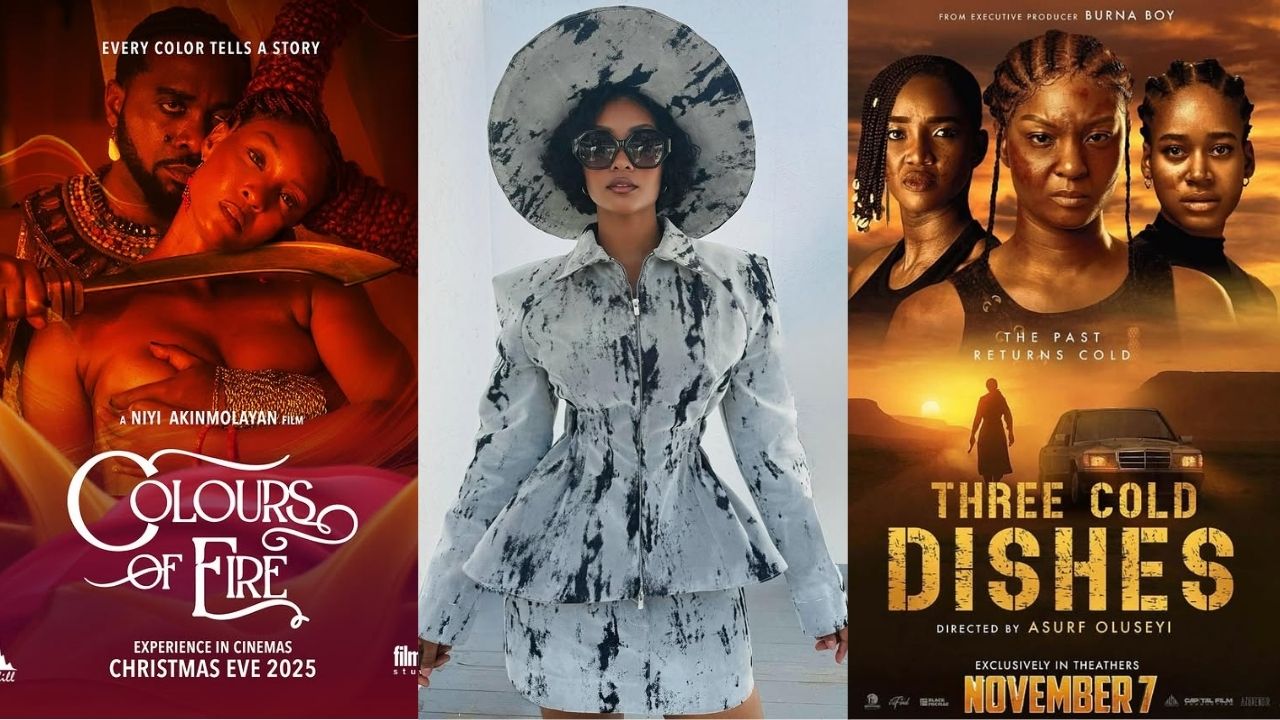3 Cold Dishes: Burna Boy’s Cinematic Gamble and the Film Signaling a New Chapter for African Storytelling
Author
Bright Alao
Date Published

Every creative industry reaches a decisive moment when evolution gives way to disruption, when an artist or project emerges with enough audacity to challenge long-standing norms. African cinema appears to be approaching such a moment with 3 Cold Dishes, a film that is already reshaping conversations around what Nollywood and continental storytelling can become.
Executive produced by Burna Boy, one of Africa’s most globally influential music artists, the film has gained attention not only for its subject matter, but for what it represents, the collision of artistic boldness, cross-industry experimentation, and a rising generation of storytellers determined to confront difficult truths rather than offer familiar, safe narratives. 3 Cold Dishes is not designed as passive entertainment, it is a mirror, unflinching, uncomfortable, and unapologetically honest.
At the center of the story are three women, Esosa, Fatouma, and Giselle, whose lives were shattered when they were trafficked as teenagers. Torn from their homes and separated from one another, they grow into adulthood carrying the emotional and psychological scars of their past. Years later, fate reconnects them, and together they embark on a single mission, to seek justice on their own terms. Not the diluted form often promised by institutions, but a form born from pain, survival, and the irreversible need for closure.
The film’s narrative is heavy, provocative, and deeply emotional, and that is precisely its significance. Human trafficking is a crisis that cuts across the African continent, yet it is often underrepresented in mainstream cinema or softened for audience comfort. 3 Cold Dishes challenges this pattern. It chooses to confront the subject directly, insisting that society acknowledge the realities many victims face.
It tells a story that refuses to be sanitized, demanding that audiences feel the weight of its characters’ experiences.
Burna Boy’s involvement adds an additional, unexpected layer to the project. Known for his boundary-breaking approach to music and for using his platform to spotlight uncomfortable societal issues, his transition into film was never going to be conventional. What stands out most is his choice of story.
Instead of opting for a commercial comedy or a universally appealing romance, the kinds of films that reliably dominate African box offices, he backed a film defined by emotional intensity, violence, and social critique. In doing so, he sends a clear message, African art must evolve not only through ambition, but through courage.
This courage is echoed in the performances that bring 3 Cold Dishes to life. The cast delivers a level of emotional depth that feels lived rather than acted. Their portrayals capture the psychological complexities of trauma, in silence, in hesitation, in subtle shifts of expression. This is a type of acting that reflects the maturation of African cinema, where vulnerability is no longer seen as weakness but as necessary truth. It also reflects a growing willingness among African filmmakers to push beyond formulaic storytelling and explore the raw emotional landscapes that define real human experience.
The film’s identity is further strengthened by its pan-African approach. Shot across Nigeria, Côte d’Ivoire, and Benin, and featuring English, Yoruba, and French dialogue, 3 Cold Dishes mirrors the cultural, linguistic, and historical interconnectedness of Africa itself. The narrative does not present Africa through the narrow lens of a single nation or culture, but as a continental mosaic. This is more than an artistic choice, it is a reclamation of the diversity and unity that define African stories, stories too often limited by geographic labels.
Naturally, a film of this intensity has attracted criticism. Some argue that its themes are too dark, too emotionally taxing for an audience that often seeks escapism. Others question whether the industry is ready for such unfiltered subject matter. But this resistance underscores the film’s importance. African cinema has long been encouraged, and sometimes pressured, to stay within safe zones, romantic comedies, family dramas, and stories designed to comfort rather than confront. 3 Cold Dishes disrupts that pattern. It chooses to explore painful truths because those truths exist and demand acknowledgment.
Ultimately, what makes 3 Cold Dishes significant is not merely its storyline, but its implications for African filmmaking. It demonstrates that the continent is fully capable of producing cinema that is emotionally layered, socially relevant, and artistically daring. It shows what becomes possible when musicians, actors, producers, and filmmakers collaborate across borders with a shared purpose. It signals the emergence of a creative ecosystem unafraid to challenge expectations and redefine what African cinema can be.
In the end, 3 Cold Dishes is more than a film. It is a cultural statement, a reminder that art has the power to provoke, awaken, and transform. For audiences who care about the evolution of African storytelling, it represents a moment that cannot be ignored. It offers not comfort, but clarity. Not escape, but engagement. And in doing so, it marks a bold new direction for the future of African cinema.

Osas Ighodaro is closing out the year in grand style with two major film releases that promise to showcase her acting & influence behind the camera.

The 2025 AMVCAs delivered a mix of crowd-pleasers, bold storytelling and polished craft. It was a night that reminded everyone......